Joana Hadjithomas & Khalil Joreige

‘A Letter Can Always Reach Its Destination’
The Lebanese duo contribute a video and hologram installation from 2012 that can be seen as part of their long-term “On Scams” project, for which they spent almost 20 years collecting spam and scam emails. Speaking to Arab News about that project in 2019, Hadjithomas said: “(These emails) were built like a story … a kind of melodrama — people are killed, or they’re dying of cancer… all these stories. And then, suddenly, they ask you for money! They ask you to help them, but you are the chosen one. It’s a very specific relationship — you’re the one they chose after long research. So we were really fascinated by them.”
This particular work uses the text of selected spam and scams voiced by non-professional actors so that they “seem transformed into scenarios for monologues — stories that become captivating, even moving, because they are told by what seems to be a ‘real’ person,” the brochure says. “Nevertheless, the presence and complex layering of technological communication is echoed in the display, where one projection is ephemerally superimposed upon another, creating a ghostlike sensibility where the virtual and physical meet.”
Hicham Benohoud
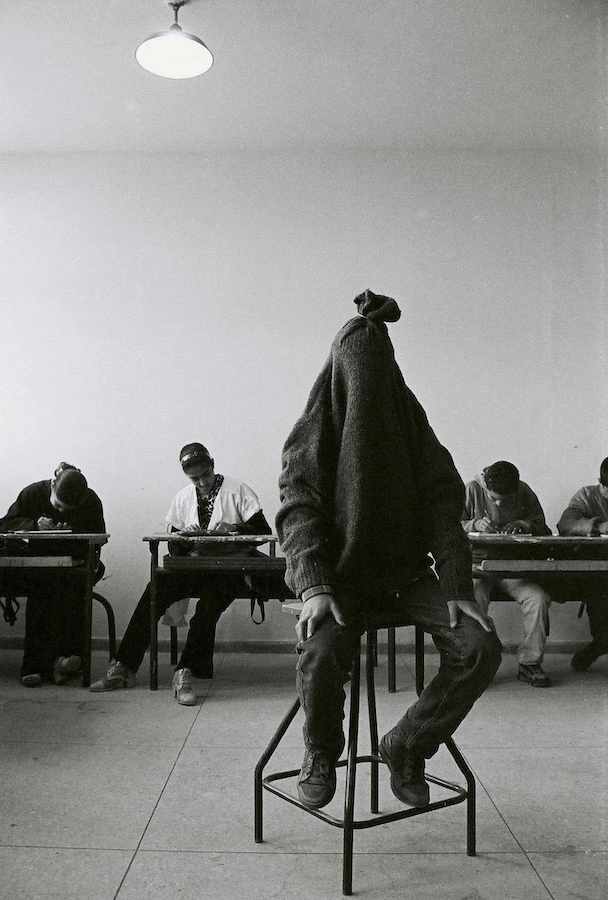
‘The Classroom’
The Moroccan artist’s striking photography series was shot over eight years around the turn of the millennium when he was working as an art teacher in Marrakech. “He actively involved his students in the making process, often providing physical constraints, prescribing specific poses and gestures or offering up different accessories to wear or use in order to construct within the space,” the brochure explains. “These seemingly calm images also suggest a violent tension. Benohoud is not a passing observer documenting moments caught by chance, but rather acts as a director staging a series of scenes in which his pupils enact power relations between the individual and the institution …series questions viewers’ attitudes towards their own pleasure or discomfort at seeing these ambiguous scenes.”
Jason Dodge
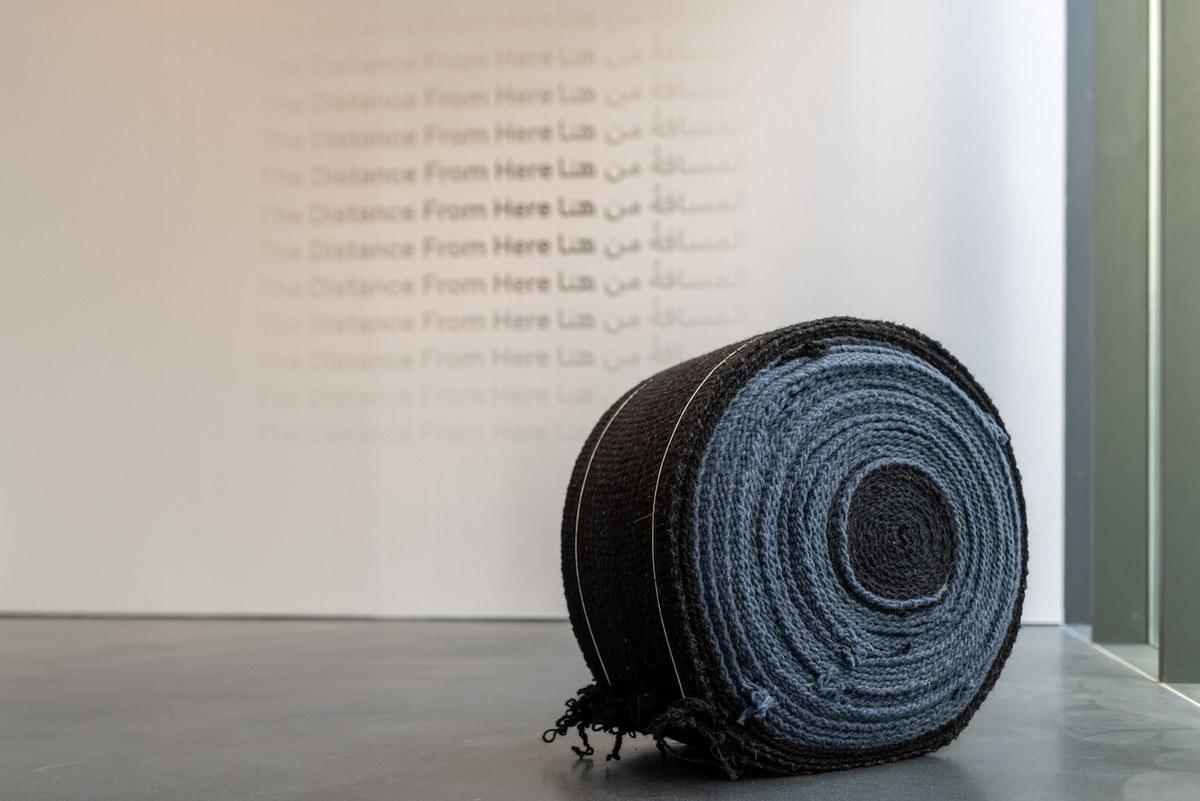
‘In Al-Jouf, Saudi Arabia …’
The full title of this work is “In Al Jouf, Saudi Arabia, Minwah Hneif Al-Ruwaili and Shiqyah Al-Ruwaili wove a measurement of yarn that is the distance between the earth and above the weather.” It is part of a series of woven sculptures that the Berlin-based American artist has created by working with weavers all over the world. “Each sculpture was woven with a single piece of string, the length of which is estimated to be equal to the distance from the Earth to the lowest region of Earth’s atmosphere,” the brochure states. “The sculptures imply natural elements, their shades of color and textures evoking multiple sensory and visual sensations and the night sky in each country. Distance is represented in the weaving; the weavers are ‘touching’ the distance from the Earth to the sky as they knit the fabric, representing their own connection to the environment.
Hrair Sarkissian
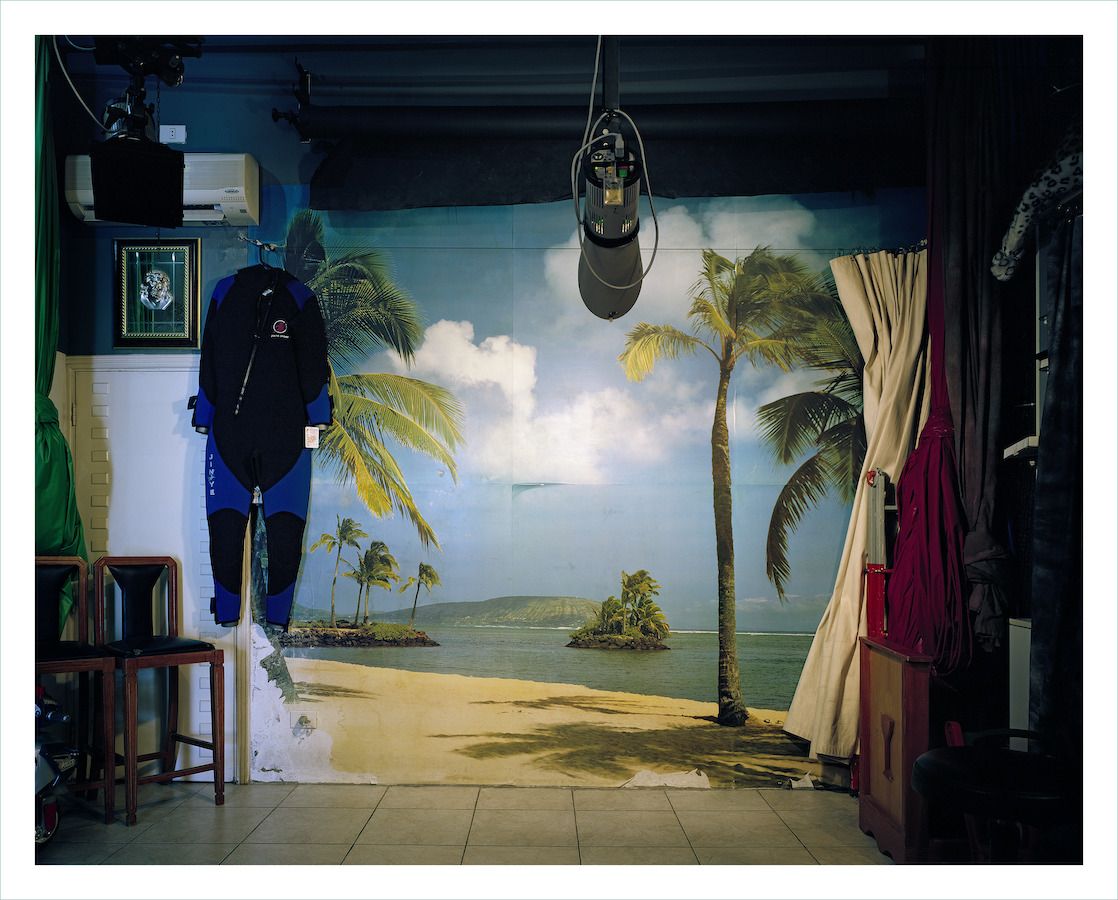
‘Background’
The Syrian artist’s prints — inspired by memories of his father’s studio in Damascus — highlight “the disappearance of a tradition of studio portraiture integral to the history and development of Middle Eastern photography in the twentieth century by documenting one of its central artefacts: the studio backdrop.” Sarkissian photographed hundreds of backdrops he discovered in Alexandria, Amman, Beirut, Byblos, Istanbul and Cairo, then selected one from each of the six cities to create images that “both monumentalize and eulogize their subject.” Seeing the backdrops empty like this, without a sitter in front of them, gives them an eerily desolate atmosphere, “like ruins or relics of a tradition that has finally run its course.”
Yto Barrada
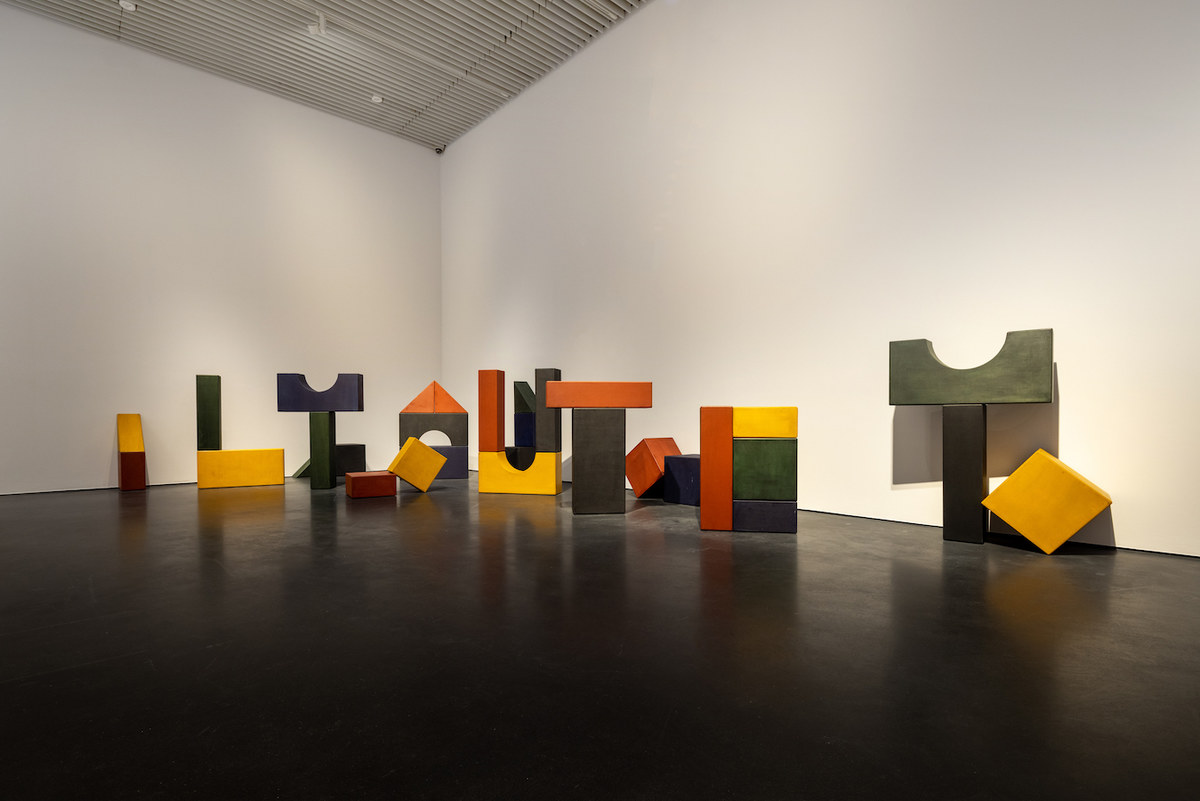
‘Lyautey Unit Blocks’
The Moroccan artist’s installation spells out the last name of the first Resident-General of French-occupied Morocco from 1912 to 1925, Marshal Hubert Lyautey. “Lyautey believed urbanism played a central role in changing people’s lives, where people of different social and cultural circumstances could coexist in urban spaces that referenced the local culture and aesthetics, while new, modern cities were developed for the European populations. However, behind these intentions lay the economic goal of building cities that foregrounded tourism and segregated Europeans and the local community,” the brochure explains. “The oversized children’s blocks (of Barrada’s work) evoke the city skyline and refer to the project of modernization in architecture and urban planning. Modernism as a part of colonialism is not always visible; under the guise of children’s toys, a sense of tension, destruction and disorder surfaces.”
Do Ho Suh
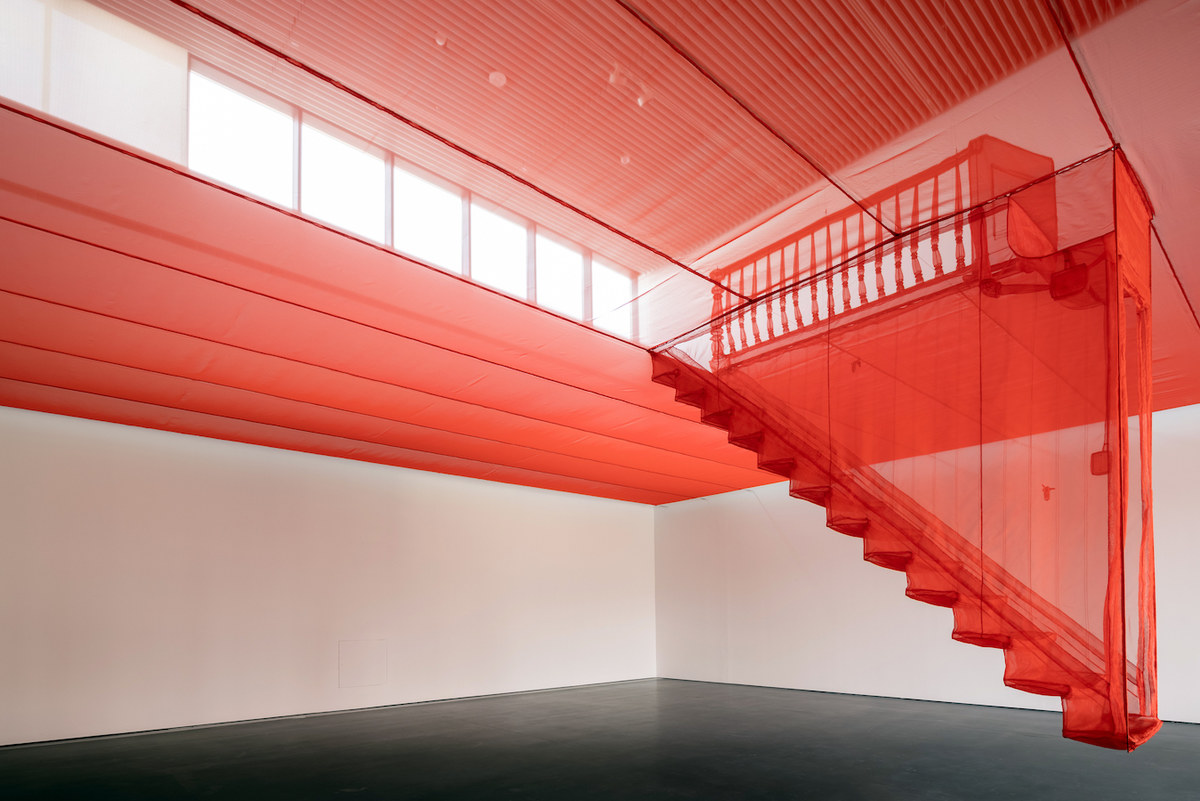
‘Staircase V’
The Korean sculptor’s polyester and stainless steel installation is a full-scale reproduction of the staircase and surrounding area in his New York apartment — complete with sockets, light switches and doorknobs. It is part of a series in which he reproduces homes he has lived in. “He is interested in transitional spaces that evoke a sense of home or lack thereof, while also questioning what home means when you are away,” the exhibition brochure explains. The real staircase on which this installation is based connects Suh’s apartment to his landlord’s “and simultaneously joins and separates the two spaces,” thus serving as a symbol of how home’s can be intimate and safe spaces, but can also feature areas that are contested, often leading to uncomfortable situations — “a site where the physical reality of space and materials, power relations and economics hold sway.”
Mona Ayyash
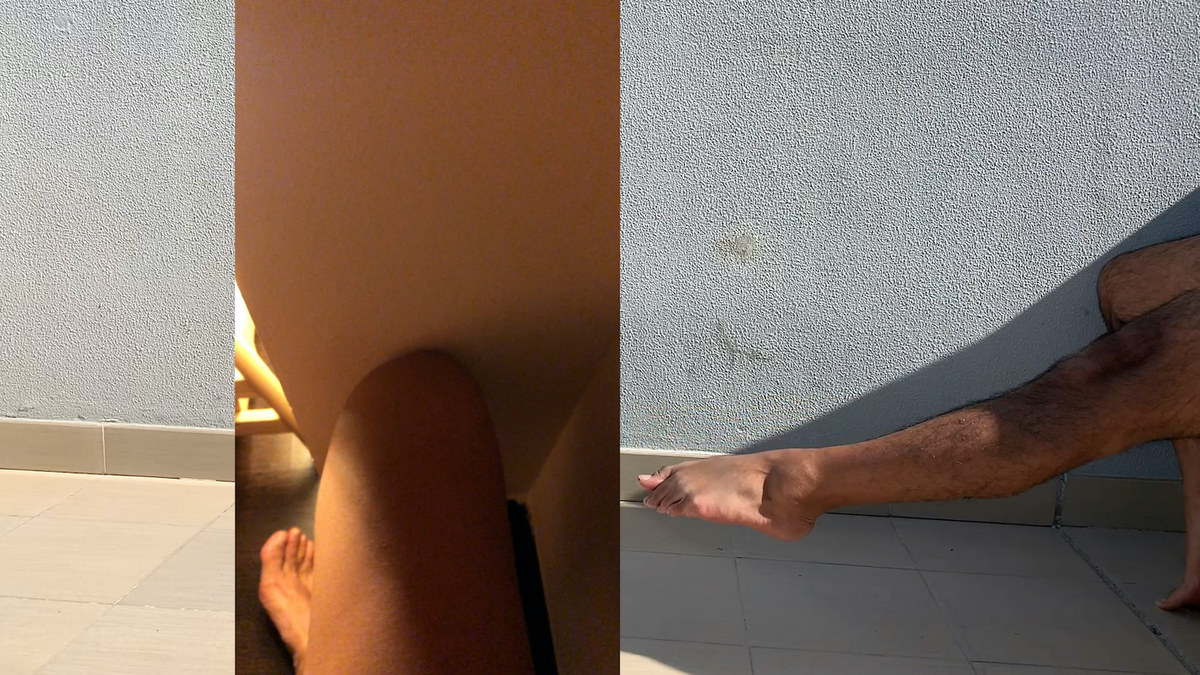
‘Folding Bellies’
For her video installation, the Palestinian visual artist invited five friends to “explore movement exercises with their bodies” in order to produce a “compilation of fragmentary gestures.” Ayyash then layered their videos on top of each other to create a disorienting blur that doesn’t seem to follow any logical progression. “Authorship of the movements is blurred as actions are copied, repeated and redirected,” the brochure states. “The work presents an intimate gaze at the body in private, confined spaces, responding to and interacting with the elements of each space—shadows, edges, corners, doors, windows, mirrors and light.”












